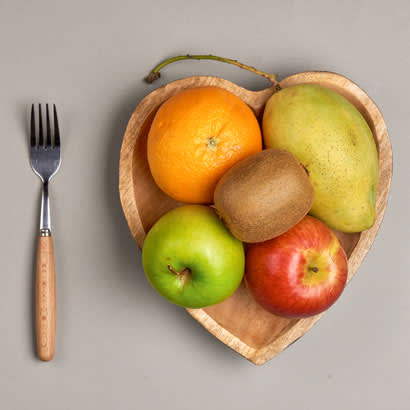
May is Older Americans Month, an annual opportunity to recognize the contributions of older Americans. This year’s theme — Engage at Every Age — emphasizes the fact that you are never too old (or too young) to take part in activities that can enrich your physical, mental and emotional well-being. Research shows that older adults who are socially engaged in their communities are mentally and physically healthier.
Through the national Aging Network, a host of agencies and organizations at the federal, state, tribal and local levels, and with the help of partners like NRPA, older Americans are able to access home and community-based services that can help them remain healthy and live independently.
Here are a few tips on how you can help older adults improve their nutrition and stay active and engaged in their communities through the meal, nutrition and physical activity programs offered through parks and recreation.
Improving Nutrition
Educate older adults on the benefits of healthy eating. Consuming a varied diet of fruits, vegetables, whole grains, beans and legumes as well as lean meat and low-fat dairy products is not only good for older adults, it ensures that they are getting the rich variety of nutrients that are needed for good health.
It’s also important to focus on nutrient-dense foods. As we get older, our calorie needs might be reduced, but our need for certain nutrients increases. Many older adults have chronic conditions and use medications, both of which can affect requirements for certain nutrients including calcium, vitamin D, folate, vitamins B6 and B12. This means it’s important to make every bite count!
Foods rich in these much-needed nutrients for older Americans include meat, poultry, eggs, fish and dairy foods. Other important sources of these nutrients are seafood, fortified cereals, plant beverages, fruit juices, dark leafy greens and canned fish with soft bones.
Protein is also important for older adults.Some older adults do not get the protein they need to maintain the muscle mass needed to sustain a healthy weight, fight infections and recover from illnesses. Protein is available from varied sources and can enhance the diets of older adults. Some ways to increase protein are:
- Add more beans. Add canned beans to soups, stews, casseroles, rice and pasta dishes.
- Make crackers count. Make crackers even more delicious by spreading peanut or other nut butters on them for snacking and when having soup, chili or salad.
- Fortify eggs. Mix grated, low-fat cheese or extra egg whites into scrambled eggs.
- Add milk. Use fat-free or low-fat milk instead of water to make soup or oatmeal, or use dry powered milk to make fluid milk for soups or mashed potatoes.
- Choose to go lean. Select leaner cuts of meat whenever possible.
Active Living
Maintaining physical fitness is key for older adults to stay strong, independent and active. Physical activity can help them achieve and maintain a healthy weight, no matter their state of health and abilities. Increased physical activity can help maintain strength and fitness, improve ability to do everyday activities, help manage and improve chronic illness, improve mood and reduce feelings of depression. Adults of all ages need at least 2 ½ hours or 150 minutes of moderate-intensity physical activity each week. Some tips for success include:
- Go for all four. Exercise and physical activity fall into four basic categories — endurance, strength, balance and flexibility. By including these types of activities into your physical activity programs, participants will receive the maximum benefit and reduce their risk of injury. Plus, it can help keep your programs fresh and innovative.
- Keep it social. You can make physical fitness social by asking participants to bring a friend or family member as an exercise buddy. The support of friends and family increases the probability that participants will maintain an active lifestyle.
This May, why not re-energize your nutrition and physical activity programs? Armed with the simple tips noted above, you are well on your way to shaking things up. Encourage older adults to reignite their nutrition routine by learning a new recipe, trying out new fruits and vegetables, taking a cooking class or food shopping in a new grocery store. They can also refresh their physical activity routine by exploring your local parks, taking a new fitness class at their local recreation center, taking the stairs instead or by exercising at home using resistance bands or chair exercises. In what ways will you engage?
Sources and resources for this blog include:
- Healthy Aging in Parks — Clean food
- Healthy Aging in Parks — Maintaining a Healthy Weight
- Healthy Aging in Parks — Sneak in More Fruits and Veggies
- Healthy Lifestyle for Healthy Older Adults
- Go4Life
- Fitness for Those with Disabilities and Older Adults
- MyPlate for Older Adults
- National Resource Center on Nutrition and Aging
Ucheoma Akobundu, PhD, RD, is the Senior Director of Nutrition Strategy and Impact and Director of the National Resource Center on Nutrition and Aging at Meals on Wheels America.

